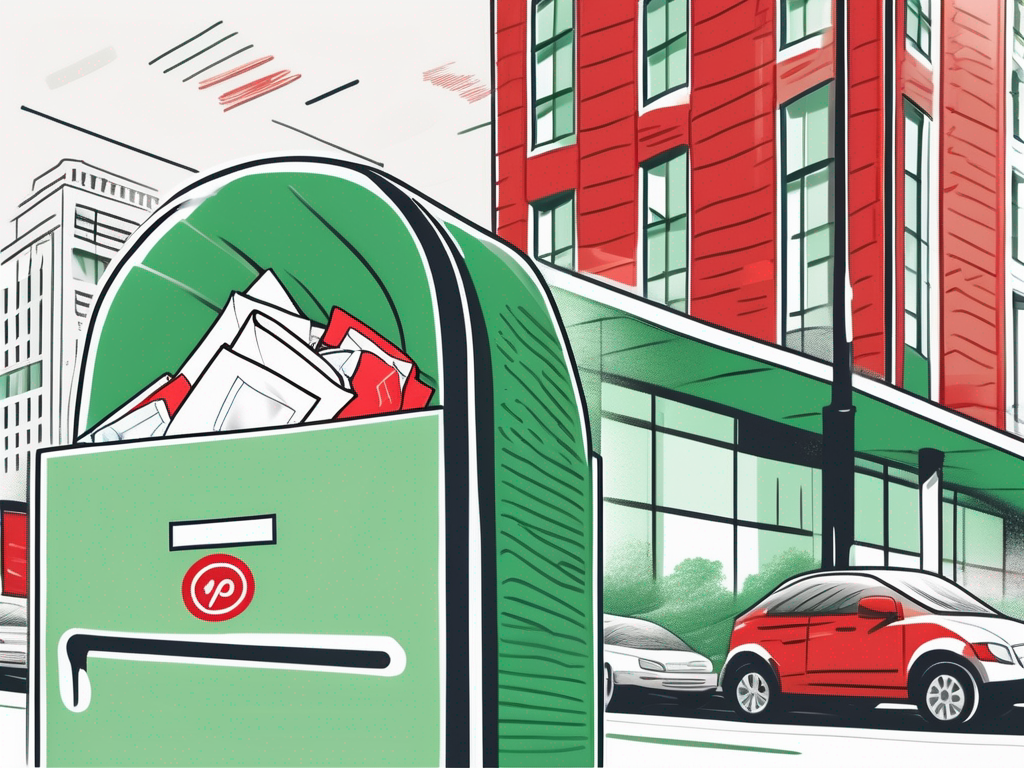Share this
How to Reroute a DHL Package: A Step-by-Step Guide
by Shipfusion Team on Jan. 27, 2025

Plans change. And when they do, ecommerce businesses have the responsibility to respond by adapting shipping arrangements accordingly. This guide explains how to reroute a DHL package, covering what it entails, how to prepare for a reroute, and the steps involved in requesting changes.
What It Means to Reroute a DHL Package
Package rerouting is the process of changing the delivery destination or instructions for a package that is already in transit. DHL provides customers with the ability to request rerouting through its online platform or mobile app, making it easy to adjust deliveries on the go.
This service can be used to:
- Redirect packages to a new address
- Hold shipments at a DHL service location for pickup
- Modify delivery preferences, such as requiring a signature or changing the delivery date
Rerouting is subject to DHL’s guidelines, including timing restrictions, package type, and availability of services in the new destination area. Additional fees may apply depending on the extent of the change and the service level chosen.
Why Might You Need to Reroute a DHL Package?
There are numerous reasons why someone might need to reroute a DHL package. For instance, unexpected circumstances such as travel plans, changes in address, or unforeseen emergencies may necessitate a redirect. The option essentially comes in handy any time a customer realizes they will not be available to receive the package at the original shipping address.
Ecommerce businesses rely on rerouting services to ensure clients receive products without delay in the face of last-minute changes. This adaptability not only enhances customer satisfaction but also strengthens relationships by demonstrating a commitment to service and reliability.
Package rerouting has become a vital tool for international shipping in an increasingly globalized world. Customers traveling abroad may find themselves needing to adjust delivery addresses mid-transit, whether due to extended stays or changes in travel itineraries.
Therein lies the value of working with a third-party logistics (3PL) company. Professional service providers like Shipfusion have real-time updates and tracking systems in place to keep customers informed every step of the way.
DHL's Policy on Package Rerouting
DHL has a comprehensive set of policies for the rerouting of ecommerce shipments. A business’ understanding of these rules will determine how quickly and efficiently they’re able to accommodate changes to delivery plans.
Packages can typically be rerouted only during transit and before the final delivery attempt. Businesses must be aware of time constraints and other relevant conditions outlined in DHL's policy to avoid any potential complications. Shipfusion’s logistics expertise ensures your rerouting requests adhere to carrier policies, while our 99.9% accuracy further mitigates delays from the very beginning of the shipping process.
General Guidelines for Rerouting
Before initiating a reroute, it is important to have all necessary information at hand. This includes the tracking number and current status of the shipment. DHL advises customers to request rerouting as soon as possible to increase the chances of successful modification.
Customers can generally reroute their packages through DHL's online portal or mobile application. This self-service option is designed to be user-friendly, providing a straightforward approach to both managing shipments and updating delivery preferences. In addition to rerouting, the platform allows customers to track their packages in real-time, providing peace of mind as they await their deliveries. The intuitive interface guides users through the necessary steps, ensuring that even those who are not tech-savvy can navigate the process with ease.
Restrictions and Limitations
There are specific restrictions associated with rerouting packages via DHL. For instance, certain types of shipments, such as international deliveries or those requiring signatures, may have additional limitations. Moreover, changes may only be possible if the package is still within the DHL network and has not yet been delivered.
Be sure to note any potential fees linked to rerouting services. While some changes may be accommodated at no extra cost, significant alterations could incur charges. Being informed of these possible fees can help in decision-making when rerouting a package.
Furthermore, it is advisable for customers to review the specific terms and conditions related to their shipment type, as these can vary significantly. Understanding these nuances can prevent unexpected surprises and ensure that the rerouting process aligns with individual high demand delivery needs and expectations.
Preparing for Package Rerouting
Preparation is key when it comes to rerouting a DHL package. Gathering the necessary information and understanding the process can significantly expedite the rerouting request. Proper preparation can help alleviate stress associated with logistics and ensure that packages reach their intended destination.
Effective preparation not only aids in preventing mistakes but can also enhance the overall experience when managing deliveries through DHL Express. A proactive approach will lead to smoother interactions with customer service, as well as a better chance of meeting your scheduling needs.
By taking the time to familiarize yourself with DHL's policies and procedures, you can navigate the rerouting process with confidence, knowing that you are well-equipped to handle any challenges that may arise. You can also skip all that work through delegation; Shipfusion takes on the complexities of ecommerce shipping and product returns for rapidly growing businesses in the D2C and B2B/wholesale industries.
Necessary Information for Rerouting
Package rerouting requires package-specific details such as tracking number, original delivery address, and the new address to which the package should be routed. Accuracy is vital to ensuring that the rerouting request is processed without delays or errors. Having the recipient's contact number on hand can further improve communication between the carrier and the recipient, especially if there are any follow-up questions regarding the delivery.
It may also be beneficial to review any additional services that DHL offers, such as insurance or special handling, which could provide extra peace of mind during the rerouting process. More options can empower customers to make informed decisions that align with their specific mail needs.
Timing Considerations for Rerouting
Timing plays a pivotal role in the rerouting process. For optimal results, customers should encouraged to initiate rerouting requests as soon as they realize a change is necessary. Once a package is out for delivery, options may become limited.
It is also wise to consider DHL's operating hours and potential delays that may arise during busy seasons or holidays. Understanding these factors can lead to more timely deliveries and can help avoid disappointment when attempting to modify shipment details.
It’s also worth keeping an eye on local events or weather conditions that might impact delivery schedules. Doing so makes anticipating potential issues and taking appropriate actions to ensure packages arrive on time easier.
Step-by-Step Guide to Rerouting a DHL Package
The following steps outline the process involved in rerouting a DHL package effectively.
Accessing Your DHL Account
The first step in rerouting a package is to log in to your DHL ecommerce account. If you do not have an account, you will need to create one, which involves providing your personal information and a valid email address. Once logged in, you will have access to your shipment details and the options for making modifications.
After accessing your account, navigate to the tracking section where you can view all your current shipments. Select the package you wish to reroute to continue the process.
Locating Your Package Details
Upon selecting the package, you will find pertinent details such as the parcel tracking number, current delivery status, and original delivery address. This information will be required to complete the rerouting request. Review the details carefully to ensure that you are making changes to the correct package.
If any information appears incorrect or outdated, contact DHL's customer service for assistance before proceeding. Timely communication can prevent issues later in the rerouting process.
Requesting to Reroute a DHL Package
Once all details have been verified, customers can proceed to request the reroute. This will typically involve entering the new delivery address and selecting any preferred delivery options. DHL will provide an overview of any associated fees or requirements for the new parcel delivery location.
After submitting the rerouting request, a confirmation email will usually be sent. This email serves as confirmation of your request and includes information about any changes to the package delivery schedule. Keeping this email at hand is important, as it may contain crucial details concerning your package's rerouting journey.
Additionally, it's worth noting that DHL offers a variety of delivery options that can be selected during the rerouting process. Customers may choose expedited shipping for urgent deliveries or opt for a specific delivery time if they have a preferred window. Understanding these options can help tailor the delivery to fit your needs and ensure that you receive your package at the most convenient time.
If you are rerouting a package internationally, be aware that customs regulations may apply. This can affect the delivery timeline and may require additional documentation or fees. Familiarizing yourself with these potential hurdles can facilitate a smoother rerouting experience and help avoid unexpected delays.
If the above steps seem like too much work to take on in-house, consider outsourcing. Ecommerce businesses of all sizes rely on Shipfusion to manage rerouting requests and handle carrier communications on their behalf. We can even secure you exclusive rates with major service providers like DHL.
Potential Issues and Solutions In Package Rerouting
While rerouting a package can usually be accomplished without issue, there are always times when things don’t go as planned. Get familiar with the following common hurdles to approach the rerouting process with knowledge and confidence should problems arise.
Dealing with Rerouting Errors
Errors in rerouting requests can occur for various reasons, including incorrectly entered addresses or system glitches. If you suspect that there has been an error in rerouting, the first step is to contact DHL’s customer service for clarification. They can investigate the issue and provide solutions based on the current status of your package.
Maintain records of all communications regarding rerouting queries. Should you need to escalate the situation, having detailed logs will help in resolving issues more effectively.
What to Do If Rerouting Is Not Possible
In some cases, rerouting may not be feasible due to various constraints, such as the package being too close to delivery or restrictions due to the nature of the items shipped. If this occurs, consider alternative options such as arranging a pickup from the local DHL facility.
You can also inquire about re-delivery options, where the carrier will attempt to deliver the package on a different day. Customer service representatives can provide insight into the best course of action under the circumstances, ensuring that you remain informed and empowered throughout the delivery process.
Still Confused? Don't Worry, Shipfusion Knows How to Reroute a DHL Package
Rerouting a package with DHL is a straightforward process when you’re prepared with the necessary details and understand the available options. Whether for personal or business reasons, rerouting can save time and ensure packages are delivered exactly where they need to go.
For businesses managing multiple shipments, having a logistics partner that provides robust delivery and rerouting solutions can make a significant difference. Shipfusion offers advanced logistics services, including flexible shipping options and proactive support for managing delivery changes.
Contact Shipfusion today to learn how we can optimize your shipping strategy and elevate your customer experience to new heights.
Share this
You May Also Like
These Related Articles

How to Create a FedEx Prepaid Shipping Label: A Step-by-Step Guide

Prevent Shipping Damage In 5 Simple Steps

How to Send Certified Mail: A Step-by-Step Guide
- April 2025 (18)
- March 2025 (26)
- February 2025 (26)
- January 2025 (37)
- December 2024 (16)
- November 2024 (23)
- October 2024 (22)
- September 2024 (27)
- August 2024 (9)
- July 2024 (8)
- June 2024 (5)
- May 2024 (8)
- April 2024 (8)
- March 2024 (6)
- February 2024 (6)
- January 2024 (5)
- December 2023 (3)
- November 2023 (3)
- October 2023 (5)
- September 2023 (4)
- August 2023 (2)
- July 2023 (1)
- June 2023 (4)
- March 2023 (2)
- October 2022 (1)
- September 2022 (5)
- August 2022 (4)
- July 2022 (7)
- June 2022 (4)
- May 2022 (4)
- April 2022 (6)
- March 2022 (2)
- February 2022 (1)
- January 2022 (3)
- December 2021 (2)
- November 2021 (4)
- October 2021 (2)
- September 2021 (5)
- August 2021 (4)
- July 2021 (4)
- June 2021 (3)
- May 2021 (2)
- April 2021 (3)
- March 2021 (3)
- February 2021 (3)
- January 2021 (2)
- December 2020 (4)
- November 2020 (2)
- October 2020 (4)
- September 2020 (2)
- July 2020 (5)
- June 2020 (4)
- May 2020 (2)
- April 2020 (2)
- March 2020 (4)
- February 2020 (1)
- December 2019 (1)
- May 2018 (1)
- March 2018 (2)
- February 2018 (3)
- January 2018 (3)
- November 2017 (3)
- July 2017 (4)
- March 2017 (3)
- February 2017 (5)
- January 2017 (3)
- December 2016 (4)
- November 2016 (6)
- October 2016 (6)
- October 2015 (1)
- September 2015 (1)
- June 2015 (3)
- May 2015 (3)
- August 2014 (1)
- July 2014 (1)
- March 2014 (1)
- February 2014 (1)